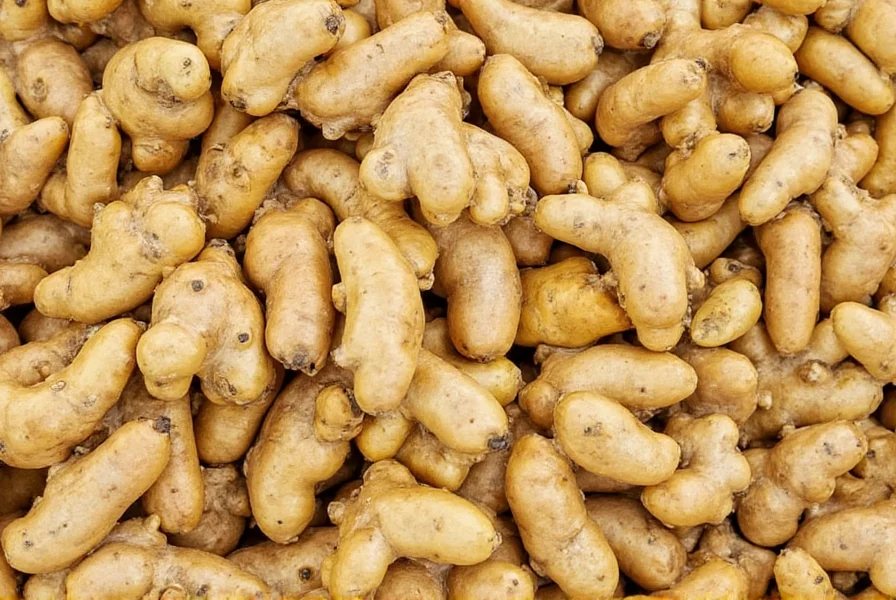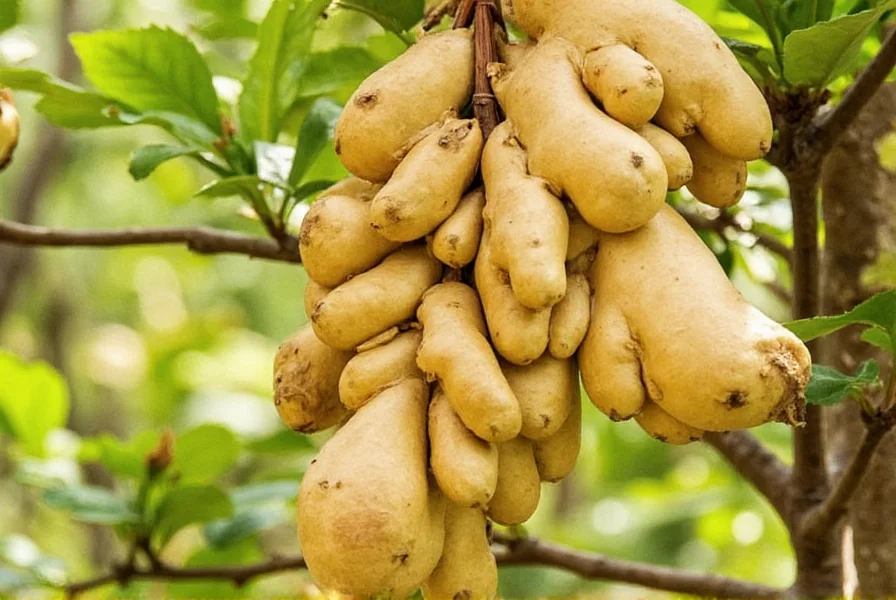Ginger (Zingiber officinale) has been cultivated for thousands of years across tropical regions for both culinary and medicinal purposes. This versatile rhizome thrives in specific climate conditions that determine where ginger is grown commercially and traditionally around the world. Understanding the geographical distribution of ginger cultivation reveals patterns that connect climate requirements with economic production.
Top Ginger-Producing Countries and Regions
When examining where is ginger grown globally, certain countries dominate production due to their ideal tropical conditions. India stands as the world's largest producer, accounting for nearly 43% of global ginger output. The northeastern states of Meghalaya, Assam, and West Bengal provide perfect conditions with their humid climate and abundant rainfall.
| Country | Annual Production (Metric Tons) | Key Growing Regions |
|---|---|---|
| India | 1,400,000 | Meghalaya, Assam, West Bengal, Odisha |
| China | 600,000 | Yunnan, Guangdong, Sichuan |
| Nepal | 250,000 | Eastern hills, Kavre, Sindhuli |
| Nigeria | 200,000 | Plateau State, Kaduna, Taraba |
| Thailand | 180,000 | Chiang Mai, Chiang Rai, Tak |
Climate Requirements for Ginger Cultivation
Understanding where does ginger grow naturally requires examining its specific environmental needs. Ginger thrives in temperatures between 25-30°C (77-86°F) with high humidity levels. The plant cannot tolerate frost and requires 1,500-3,000 mm of well-distributed rainfall throughout its growing season.
Commercial ginger farming regions typically feature these key characteristics:
- Warm tropical or subtropical climate without frost
- Ample rainfall or reliable irrigation systems
- Well-drained loamy or sandy soils rich in organic matter
- Altitude range of 0-1,500 meters above sea level
- Partial shade conditions, especially during initial growth
These conditions explain why certain areas have become major ginger-producing regions while others struggle with cultivation. Regions with distinct wet and dry seasons often time planting to coincide with the beginning of the rainy season.

Historical Spread of Ginger Cultivation
Ginger originated in Southeast Asia, likely in what is now southern China or the Indian subcontinent. Historical records indicate ginger cultivation in India and China dating back over 5,000 years. The spice trade routes facilitated ginger's spread to other tropical regions worldwide.
By the 1st century CE, ginger had reached the Mediterranean through Arab traders. Spanish explorers introduced ginger to the Caribbean in the 16th century, where Jamaica eventually became famous for its high-quality ginger. African cultivation began primarily in the 19th century, with Nigeria emerging as Africa's largest producer.
Commercial Ginger Farming Practices
Modern commercial ginger farming follows specific practices that maximize yield while maintaining quality. Farmers typically plant ginger rhizomes at the beginning of the rainy season, with harvesting occurring 8-10 months later when the leaves begin to yellow and dry.
Key aspects of commercial ginger production include:
- Selection of disease-resistant varieties appropriate for local conditions
- Soil preparation with ample organic matter before planting
- Regular weeding and mulching to maintain soil moisture
- Pest and disease management without excessive chemical use
- Post-harvest processing including washing, curing, and storage
Small-scale farmers often intercrop ginger with other plants like bananas or coffee, which provide necessary shade during the early growth stages. This traditional practice demonstrates sustainable agricultural methods where is ginger grown in resource-limited settings.
Growing Ginger Outside Traditional Regions
Many gardeners wonder if they can grow ginger in non-tropical climates. The answer is yes, with some adaptations. In temperate regions, ginger can be grown as an annual crop during warm months or cultivated indoors year-round.
Successful ginger cultivation outside traditional growing regions requires:
- Planting in containers that can be moved indoors when temperatures drop
- Providing partial shade and consistent moisture
- Using well-draining potting mix with high organic content
- Maintaining temperatures above 18°C (64°F)
- Reducing watering during dormancy periods

Economic Importance of Ginger Production
Ginger represents a significant agricultural commodity worldwide, with global production exceeding 3 million metric tons annually. The economic impact varies by region, with smallholder farmers comprising the majority of producers in developing countries.
India's dominance in ginger production stems from both favorable growing conditions and established agricultural infrastructure. Nigerian ginger has gained prominence in international markets due to its high quality and competitive pricing. Jamaican ginger, though produced in smaller quantities, commands premium prices for its distinctive flavor profile.
Understanding where is ginger grown commercially helps explain market dynamics, price fluctuations, and quality variations in the global ginger trade. Climate change poses challenges to traditional ginger-growing regions, potentially shifting production patterns in coming decades.
Frequently Asked Questions
Can ginger be grown in the United States?
Yes, ginger can be grown in the United States in USDA hardiness zones 9-12, including Hawaii, Florida, southern Texas, and parts of California. In cooler regions, gardeners can grow ginger in containers that can be moved indoors during colder months. The growing season typically lasts 8-10 months from planting to harvest.
What makes Indian ginger different from other varieties?
Indian ginger, particularly from the state of Meghalaya, is known for its high essential oil content and pungent flavor. The unique soil composition and climate conditions in northeastern India contribute to ginger with higher concentrations of gingerols, the compounds responsible for ginger's characteristic heat and medicinal properties. Indian ginger typically has a pale yellow color and strong aroma compared to some other varieties.
How long does it take to grow ginger commercially?
Commercial ginger cultivation typically requires 8-10 months from planting to harvest. Farmers plant ginger rhizomes at the beginning of the rainy season, and harvesting occurs when the leaves begin to yellow and dry, usually in late summer or early autumn. Some varieties may take up to 12 months to reach full maturity, depending on climate conditions and agricultural practices.
Why is Nigeria becoming a major ginger producer?
Nigeria has become Africa's largest ginger producer due to favorable growing conditions in its central plateau region, particularly in Plateau State. The country's ginger has gained international recognition for its high quality, with lower fiber content and pleasant aroma. Nigerian ginger benefits from rich volcanic soils, adequate rainfall, and increasing investment in agricultural infrastructure, making it competitive in global markets, especially in Europe and the Middle East.
What soil conditions are best for growing ginger?
Ginger grows best in well-drained, loamy or sandy soils rich in organic matter with a pH between 5.5 and 6.5. The soil should retain moisture without becoming waterlogged, as ginger rhizomes are susceptible to rot in poorly drained conditions. Farmers often prepare ginger beds with generous amounts of compost or well-rotted manure to improve soil structure and fertility. Raised beds are commonly used in regions with heavy rainfall to ensure proper drainage.











 浙公网安备
33010002000092号
浙公网安备
33010002000092号 浙B2-20120091-4
浙B2-20120091-4